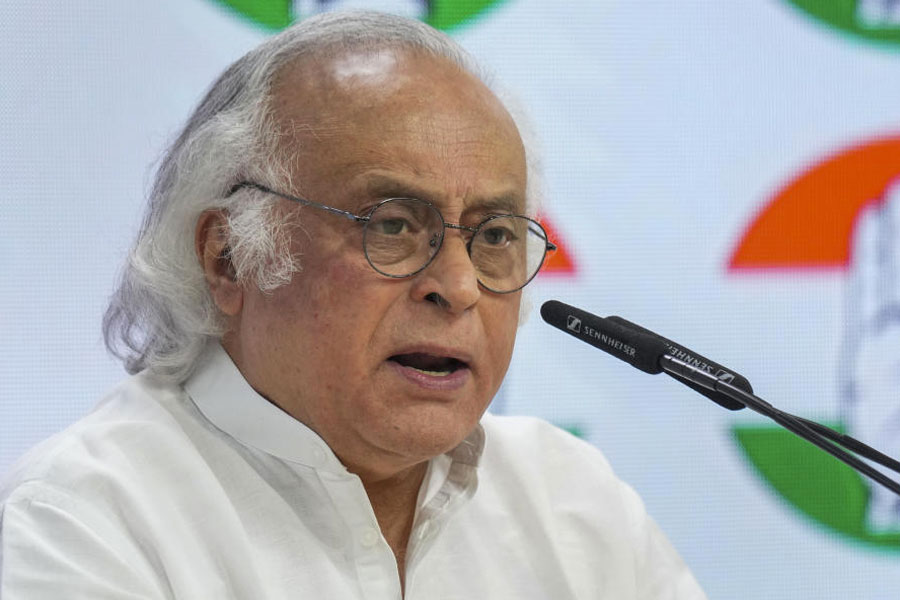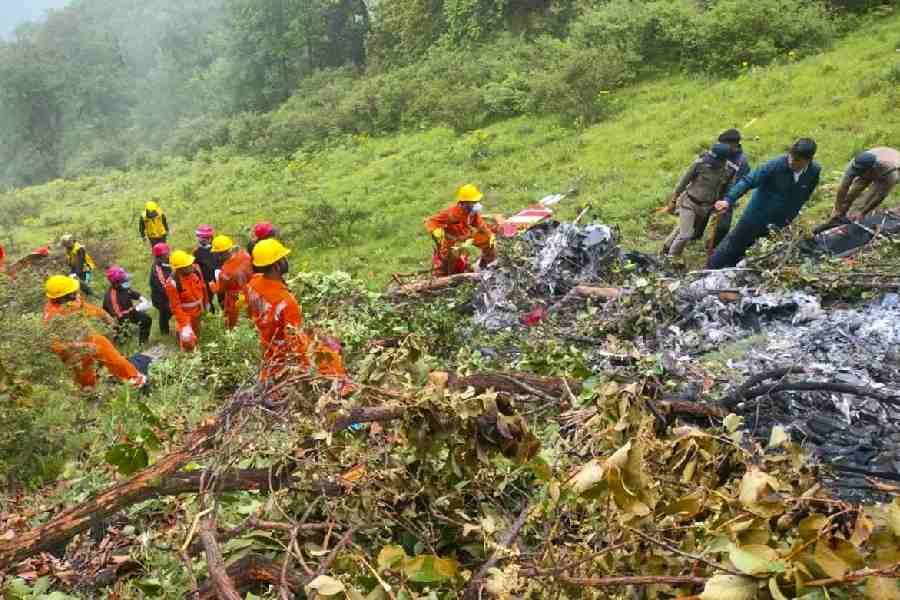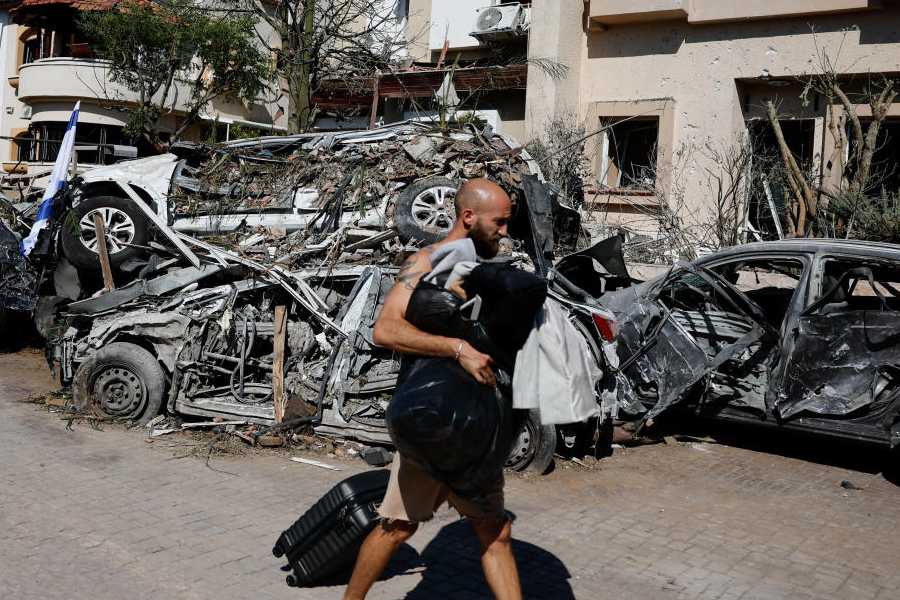 |
 |
 |
| (From top) A model displays a Bibi Russell creation at the Bangladesh Festival in Mumbai last year; the Bangladeshi designer with Sharbari Dutta on the sets of the new TV show she is anchoring (picture by Pabitra Das); a model flaunts a Bibi ensemble at the German fashion fair in Dusseldorf in January |
She has taken fashion from a developing country to the global high-street and earned both herself and the work of village artisans ? who she has promoted for over a decade ? accolades aplenty. She received a standing ovation at a German fashion fair in January, where she launched her spring-summer 2005 collection. She got the Queen of Spain to flaunt a gamchha to the Fashion Week in Spain last year, where she launched her autumn winter collection.
She is Bibi Russell, a fashion designer who has achieved what many would perceive as impossible. On a trip to Calcutta, her effort this time is to bring to the fore the talent of budding designers of Bengal.
What brings you to Calcutta now?
I am here to shoot for a television feature called Fashion for Development as the anchor of the show. Over two days, I?ve shot eight episodes of the weekly 30-minute programme, where I have featured a mix of young and established fashion design professionals.
It?s like an informal adda session where the guests chat with me about their work, their inspiration and their life at large. There will be a message during the course of the show to fashion-profession aspirants on how to get into the field, but that will be done in a rather playful manner.
I am banking on the network of satellite television that has now reached rural homes as well and I am hoping that even village artisans will benefit from the discussions. That is why the medium of communication is Bengali.
How did you get involved with this project?
When Tara Bangla, the channel that has conceptualised the show, approached me with the idea, I asked was what it was all about. Having learnt that it?s an effort to explore how fashion can bring about economic development, I agreed immediately.
I am the strongest advocate of the idea that fashion can bring economic independence to villagers across the developing world. After agriculture, it is craft that these people pursue as an occupation and if these can be sold to the fashion industry across the globe, it will lead to the uplift of these artisans.
I was also concerned about giving my time to TV since I could have otherwise spent that time with village artisans directly. But I have realised that this show is going to be worth its while.
When will your clothes be showcased next in Calcutta?
I am coming here on April 25 to launch my new collection, created for a special cause. A few of my friends here are doing a fundraiser to build an old-age home and since I have always wanted to work for the cause, I decided this was the chance to do it. In fact, I am driving down from Bangladesh for the show to save airfare.
What is your latest innovation with the gamchha?
Well, with the Queen of Spain wearing a gamchha as an accessory to my show in Spain last year, everyone was curious to know what the colourful piece of cloth was. The media hype about the accessory led a well-known Spanish fashion house to approach me to create a line of sunglasses inspired by the gamchha. The frames are in vibrant colours with multi-colour stripes and checks. The company is launching the range this summer.
What did you showcase at the German fashion fair? Was it the gamchha that made waves there too?
No. In fact, I didn?t showcase a single gamchha-inspired creation in Germany. I had worked with a group of villagers in Bangladesh who are competent in crochet work. So I made crochet dresses and kurtas in vibrant colours that became a huge hit.
The other thing that is doing unusually well in the international market is the simple bangles made from fibre of water hyacinth. One village in my country has been saved and now survives by producing these bangles.











